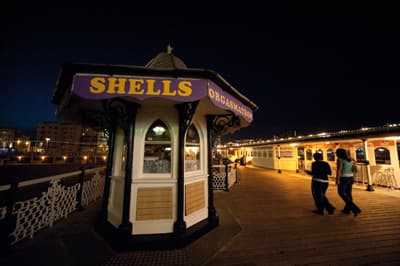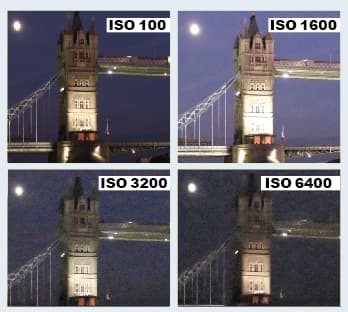 The ISO settings are one of the most important image parameters on the camera. This affects not only which exposure settings you can use, but also plays a major role in determining the final image quality.
The ISO settings are one of the most important image parameters on the camera. This affects not only which exposure settings you can use, but also plays a major role in determining the final image quality.
How to use ISO: Sensor sensitivity
Digital cameras are able to change the sensitivity of their sensors to light. The more sensitive a sensor is to light, the less of it the camera will need to record an image.
When there isn’t enough light to shoot without using too slow a shutter speed, boosting the ISO sensitivity of the sensor will mean less light is required. This will mean you’ll be able to use a faster shutter speed or smaller aperture and still get a well-exposed image.
How to use ISO: High ISOs – the catch
So why not keep the ISO setting high all the time? Well, there’s a downside – as you raise the ISO the image quality degrades, due to the occurrence of image noise.
This appears as specular grains, sometimes multi-coloured, over your image. It is especially visible in the shadows and areas of uniform tone. The higher you set the ISO the coarser and more obtrusive these grains become.
As a rule you should set the lowest ISO that will let you use the shutter speed and aperture combination that you need.
How to use ISO: The ISO Scale
Most cameras’ ISO ranges start at ISO 100, or 200. This is fine for shooting static subjects outdoors in reasonably bright light and should be your default position.
Each doubling of the ISO represents one extra stop of sensitivity. Going from ISO 100 to ISO 200 will enable you to use a shutter speed one stop faster. Or an aperture one stop smaller, while maintaining the same exposure.
Most cameras’ ISO scales go up to at least ISO 1600 and some newer cameras beyond ISO 6400. Not all cameras provide equal image quality at a given ISO – some are better than others in this regard.
How to use ISO: When to use higher ISOs
Here are some examples of when you might want to use a higher ISO setting. In every case, set the lowest ISO that will enable you to use the settings that you need.
-

This dimly lit Budapest Theatre was photographed at ISO 1600
When you are using a telephoto lens and there is not enough light to use a shutter speed that is at least as high as the focal length your lens is set to. For example, if using a lens set to 200mm, the shutter speed should be at least 1/200th to reduce the risk of camera shake.
- When photographing fast-moving subjects and the light isn’t bright enough to use a shutter speed high enough to freeze the motion.
- When using flash and the flashgun isn’t powerful enough to correctly expose your subject – either because it’s so dark or your subject is too far away.
- When you’re shooting indoors, and flash is either prohibited, or would be obtrusive (e.g. at a live performance), or would destroy the atmosphere created by the ambient lighting.
- When you need to use a small aperture to create as wide a depth of field as possible, and doing so would give you a shutter speed that’s too slow to hand-hold.
- When shooting hand-held at dusk or on overcast days when it isn’t bright enough to use a shutter speed higher than 1/60th second, with your standard lens. At speeds slower than this the risk of camera shake becomes greater.

A high ISO of 1600 was needed here because the camera was hand-held and I needed a shutter speed that was fast enough both to avoid camera shake and record the walking people in reasonably sharp focus







